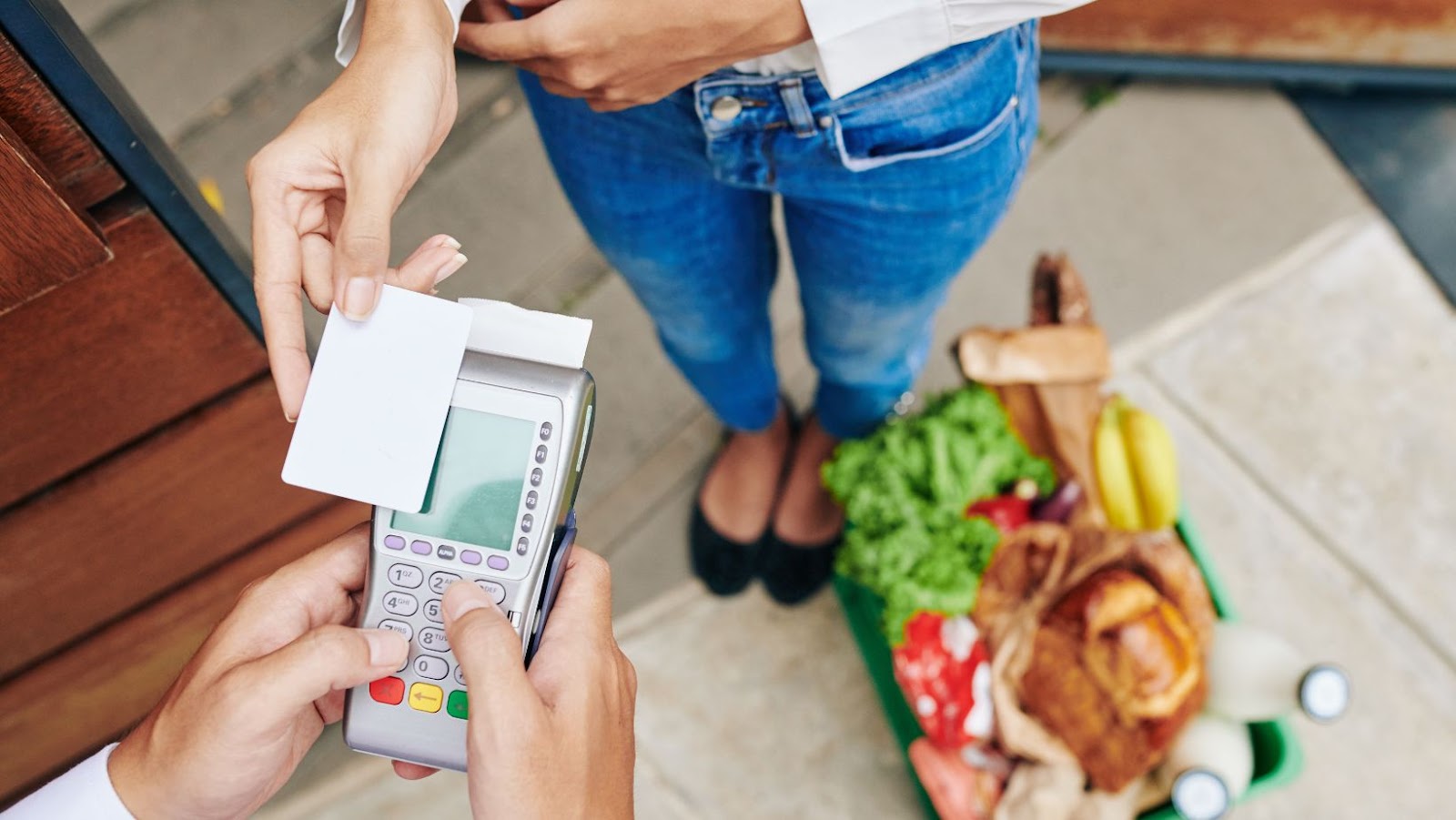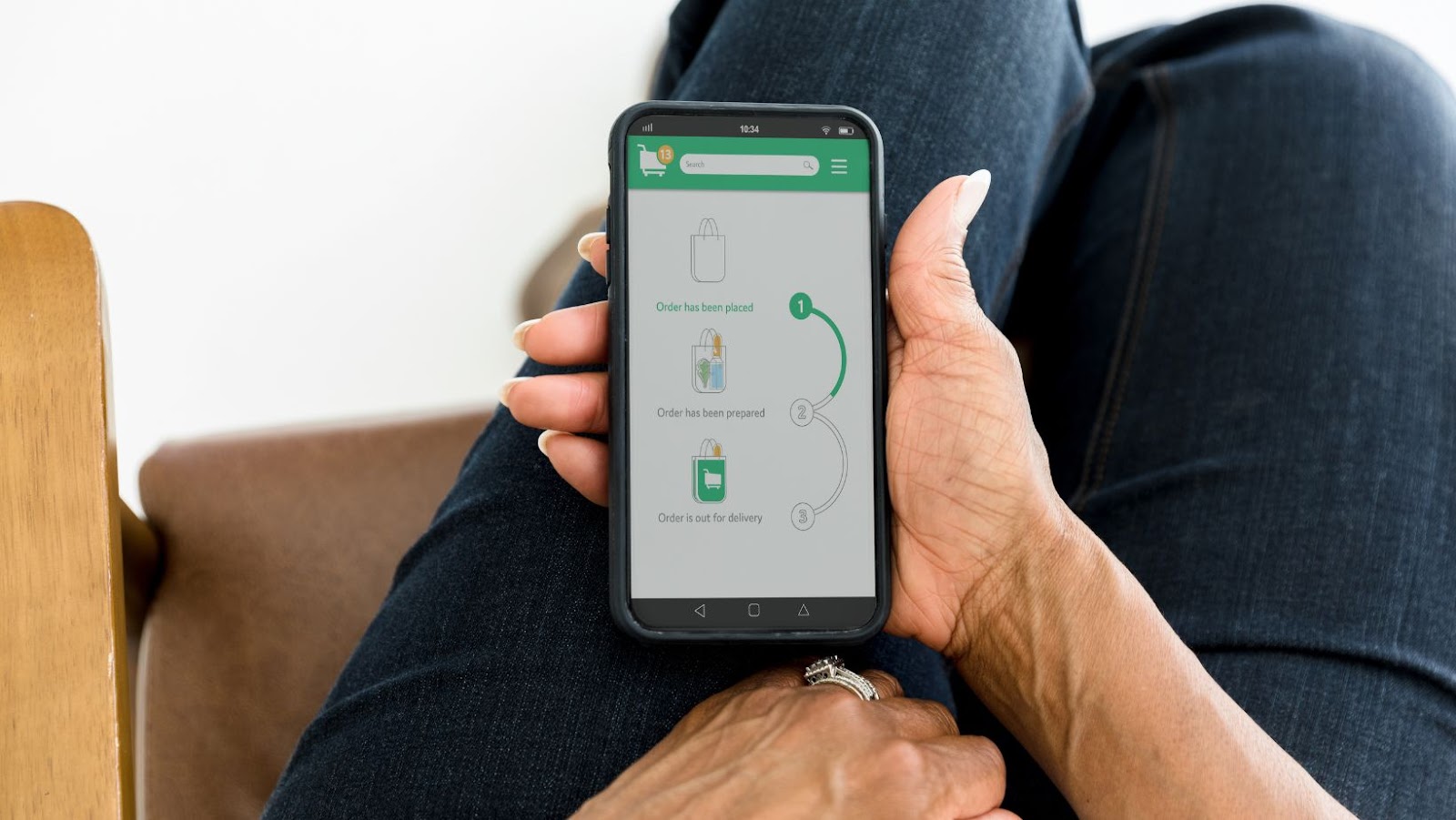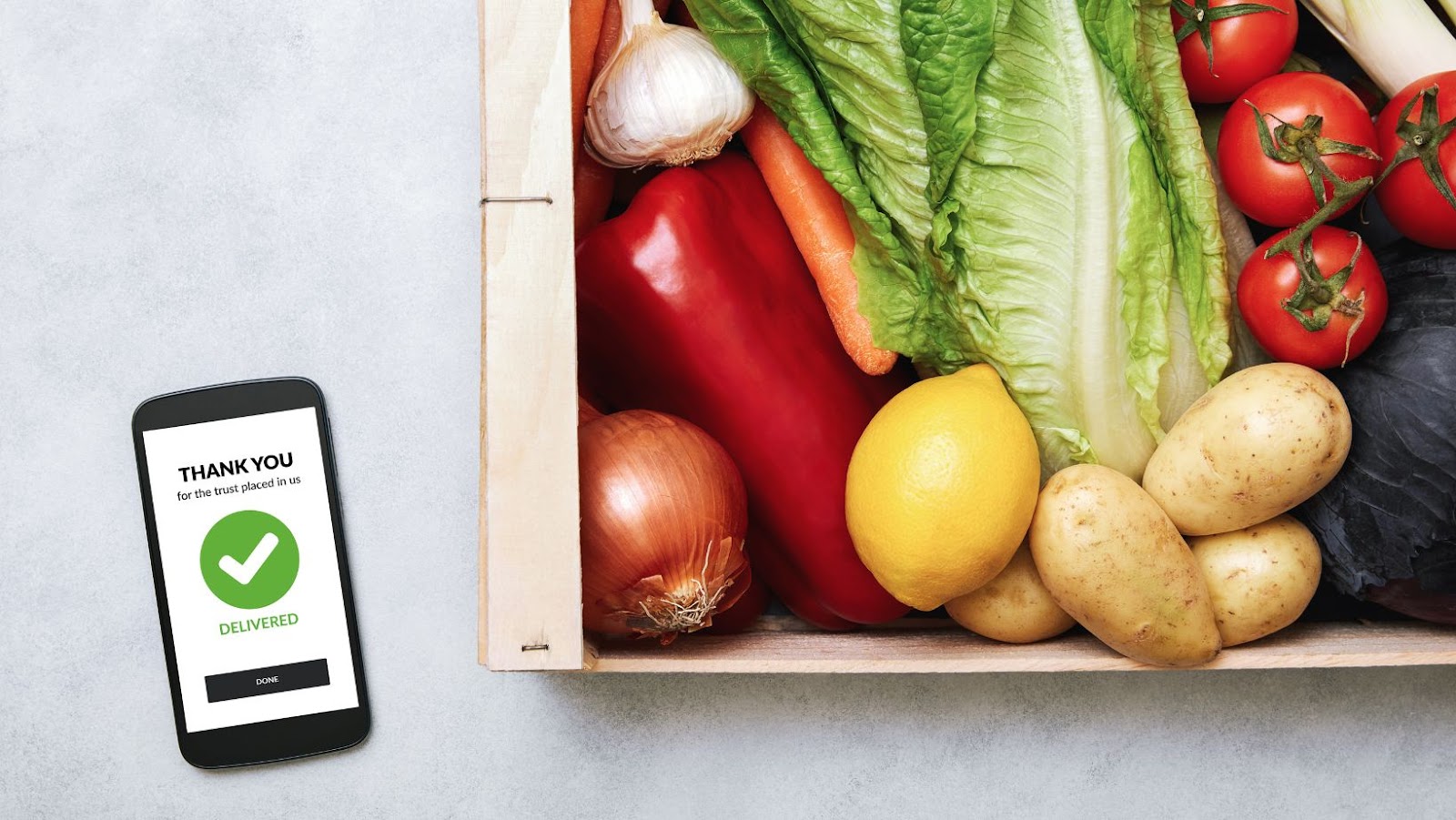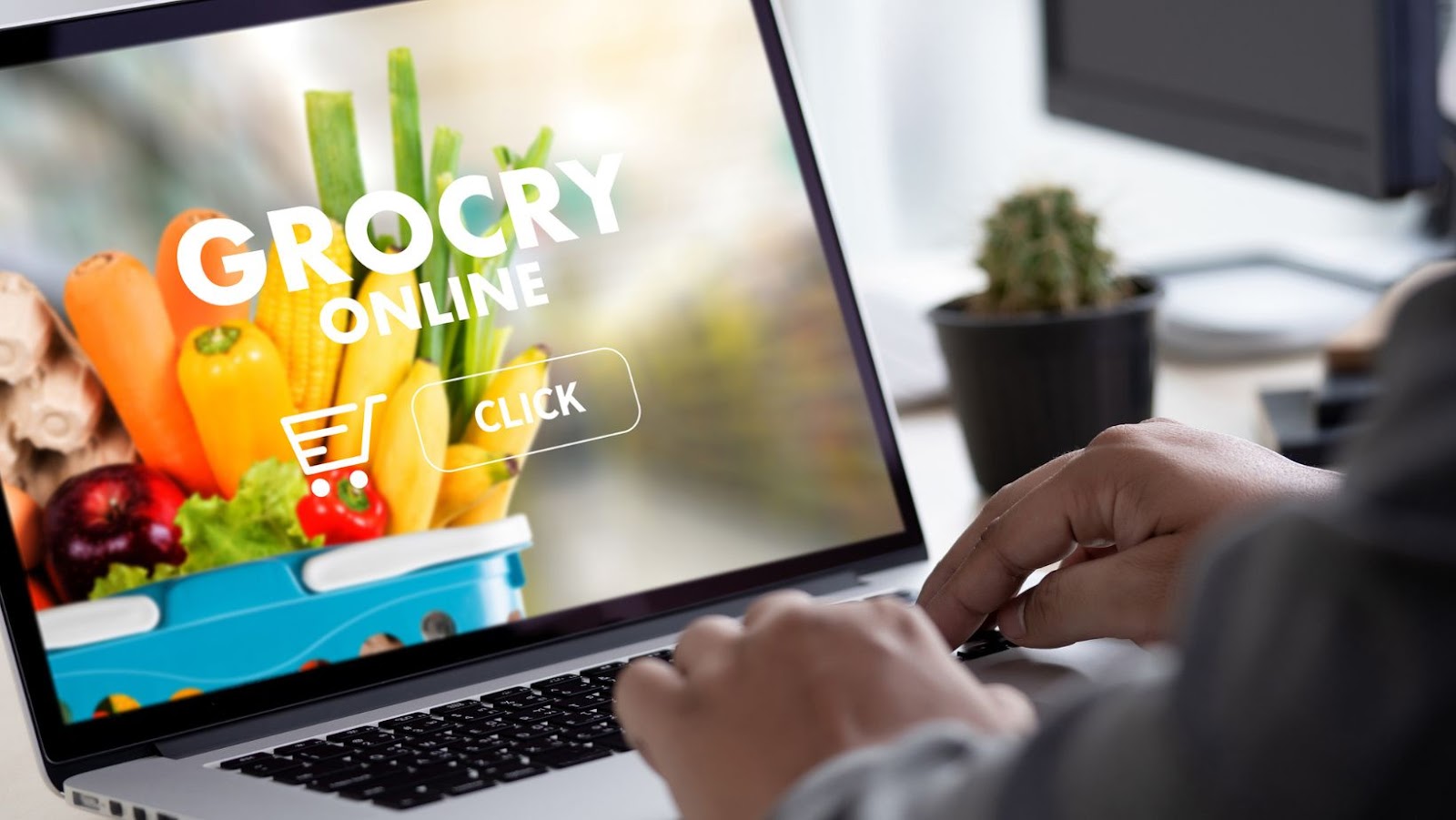Rohlik is a rapidly-expanding grocery delivery service in Europe, having recently raised $119M at a $1.2B valuation. This recent injection of funds highlights the competitive nature of the grocery delivery space, and indicates where the industry might be heading shortly.
In this article, we’ll closely examine Rohlik’s competitive landscape, analyzing how this grocery delivery service fits into the larger market.
Overview of Rohlik
Rohlik is a Czech-based e-commerce platform that offers 2-hour grocery delivery services in six countries across Central and Eastern Europe. Founded in 2014, the company has become one of the biggest grocery delivery players in the region. Rohlik’s operations have secured $488 million from multiple rounds of venture capital financing, allowing them to expand into diverse markets and match the pace of their fast evolving rivals.
Since Rohlik’s first round of Series A funding in 2017, which amounted to €21 million, the company has achieved astonishing growth and now stands as one of Europe’s leading online grocery services. The latest Series E round totaled €107 million (around $119 million USD) and was led by new investor Atomico alongside existing investors South Korea’s SoftBank Vision Fund and Rakuten Capital. This most recent investment valued Rohlik at more than $1.2 billion USD.
The company continues strengthening its regional footprint by developing cutting edge technology and acquiring other players within its competitive landscape such as KupiVIP, Latvia’s EkoParty, Slovakia’s BeFresh!, Hungary’s lifegreen, as well as ClupBasket in Poland. As a result, Rohlik now covers five major markets: The Czech Republic, Poland, Hungary, Slovakia and Romania – with plans to expand even further in 2021.
Introduction to the competitive landscape
Rohlik is a Czech-based grocery delivery service that is revolutionizing the grocery delivery industry in Europe. Founded in 2014 by Ondrej Fertak and Jan Pacas, Rohlik has experienced tremendous success and rapid growth, raising $119 million in funding at a valuation of $1.2 billion. This injection of capital means Rohlik can continue to scale at an impressive rate, solidifying its place in the European grocery delivery market.
As a digital service aimed at saving shoppers time and effort, Rohlik faces competition from existing brick-and-mortar retailers that are turning to ecommerce solutions or home delivery services to stay competitive. Additionally, there are startups focused on making the grocery delivery experience faster (e.g., Sqoon), more idiosyncratic (e.g., Farmdrop), more personalized (e.g., Globe), and so on. One key challenge for young companies like Rohlik is defining themselves both within (i) their domestic markets, as well as (ii) throughout Europe’s heterogeneous consumer base more broadly—in terms of language/location specific product offerings, payment/delivery options, pricing structures, and so forth.
In this article we’ll explore the competitive landscape surrounding Rohlík’s two hour grocery delivery service by examining key players such as other supermarkets offering online orders with home deliveries or online-only initiatives; smaller retail startups like those mentioned above; existing meal kit services; and increasingly popular mobile platforms for wide range of retail activities such as price comparison for online shoppers etc.. We’ll also consider recent advancements in artificial intelligence (AI) technology powering personalized shopping experiences offered by now sprawling ‘grocerytech’ industry as well as potential issues relying too much on it might bring forward—issues ranging from ethical considerations to availability and technical constraints among few more…

Rohlik raises $119M at a $1.2B valuation to grow its 2-hour grocery delivery service in Europe
Rohlik, Europe’s leading two-hour grocery delivery service, recently raised $119 million at a $1.2 billion valuation, signaling continued investor confidence in the company.
To better understand the competitive landscape of the grocery delivery market, it is important to analyze the current market trends and the competitive forces in the industry. This analysis will better understand Rohlik’s competitive position and how it differentiates itself from its competitors.
Identify the competitors
Rohlik is part of a competitive landscape of companies offering same-day and 2-hour grocery delivery services in Europe. The key competitors in this space include Tesco, Ocado, Instacart, Amazon Fresh, and Ahold Delhaize.
Tesco has the largest market share of any retailer in the United Kingdom, with 4200 stores and 33 million customers served weekly. It offers online ordering for fresh produce, alongside click-and-collect services to enable customers to purchase items online and pick them up from the store in as little as an hour. Tesco also partners with food tech companies such as its grocery delivery joint venture with Ocado, which enables two hour delivery.
Instacart is a US-based grocery delivery service rapidly expanding across Europe. It provides same day or 2-hour deliveries from retailers such as Lidl or Carrefour and operates across 13 countries across Europe.
Amazon Fresh is available in 11 countries across Europe. Still, adoption has been slower due to customer requirements to be Prime members before they can access the delivery service, plus an inconvenient checkout process. Nevertheless, AmazonFresh is mainly popular among high-income consumers who desire a hassle free alternative for shopping groceries online.
Ahold Delhaize is a leading international retailer that operates over 7500 stores across 11 countries in Europe. In addition, Ahold launched its ecommerce channel, www.aholddelhaizeeshopgrocerybasketin2018 offering home deliveries within two hours via its web shop, EshopGroceryBasketin Amsterdam Netherlands.
Finally, Ocado is a leading British online supermarket established nearly 20 years ago which serves customers through specialized robots on their order fulfillment centers located outside London. Ocado started operations for two hour deliveries through partnering with third party couriers late last year 2019.
Analyze the competitive landscape
The competitive landscape for Rohlik; a two-hour grocery delivery service based in Europe is highly dynamic. With the unprecedented influx of capital, new competitors are actively looking to make a name for themselves – investing heavily to gain market share. As such, it is critical for Rohlik to conduct its market analysis by looking at the regional markets, technology solutions, pricing strategies, customer engagement activities and other factors to stay ahead of its competition. Through a comprehensive analysis of the changing landscape – current and future – Rohlik can anticipate and preempt any impending threats or opportunities that could arise due to increased competition.
By analyzing the region’s economy, Rohlik can identify potential opportunities and current threats that may come from newer competitors in their respective markets. Additionally, by monitoring relevant technologies used by their competition such as cloud computing or data science tools – Rohlik will be able to develop forward-thinking solutions that keep them on top when meeting customer demands for convenience and quality results.
By considering different pricing structures and marketing techniques currently used by competitors – plus predicted developments based on industry trends – Rohlik can assess how their pricing model fares against those of their more established rivals and upcoming startups in Europe’s online grocery delivery industry.
Finally, based on data from customer surveys and reviews; along with an evaluation of what customers are saying across social media channels -Rohlik will be able to informally assess its rivals’ performance across criteria such ratings & reviews or customer service offered before formulating appropriate responses accordingly to maximize profits while effectively serving their customers’ needs.
Analyze the target market
To understand the competitive landscape for Rohlik, it is important to analyze the target market for their offering. Rohlik is a 2-hour grocery delivery service that operates in European markets. Its target customers value convenience and time-saving tools in their shopping experience.
Rohlik appeals to busy professionals who want to be able to order groceries without having to leave home, as well as individuals with mobility issues that make conventional shopping difficult or impossible. The company primarily services Urban areas with high population density and competition from similar services.
In order to appeal to their target demographic, Rohlik has made a conscious effort to ensure their customer service and delivery times are superior than others in the industry. For example, they offer same-day deliveries and prioritize customer feedback. Additionally, they have implemented sophisticated technology infrastructure to better track orders and customizations. This and a strategic partnership with an app development company have allowed them to differentiate themselves from competitors in an increasingly crowded market.

Keyword Research
Keyword research is essential for understanding the competitive landscape of Rohlik and their 2-hour grocery delivery service in Europe. It helps to identify the most relevant keywords, determine the user’s search intent, identify potential competitors in the market, and identify the potential customers of the service.
This section will explain the importance of keyword research and the tools used to perform it.
Identify relevant keywords
Keyword research plays an important role when researching a competitive landscape. Identifying the right keywords is essential for targeting a specific topic or audience.
The objective should be to identify terms related to your competitive landscape and will not only help you find relevant online conversations regarding the topic, but will also allow you to track how the competitive landscape has evolved. Keywords should be chosen carefully, as they will affect the scope and accuracy of your search results.
To begin selecting relevant keywords for your competitive landscape, collect words commonly associated with the topic at hand; some tools such as keyword research websites can help with this process by identifying related terms and phrases. Once this initial set of terms has been established, use online tools (e.g., Google Adwords) to discover which keywords are most searched for in the market and which have a higher frequency of searches than others. Additionally, analyze search engine autocomplete results to better understand what people are looking for when researching targeted topics and refine your list accordingly.
In the context of “Rohlik raises $119M at a $1.2B valuation to grow its 2-hour grocery delivery service in Europe”, some potential relevant keywords may include: groceries, delivery services, 2-hour delivery services, grocery delivery service Europe (or similar targeted geographical region), Rohlik grocery service (or any other variation), $1.2 billion valuation (with appropriate currency variation), etc.
Analyze keyword competition
It is important to analyze keyword competition when conducting keyword research to understand the competitive landscape of Rohlik’s 2-hour grocery delivery service in Europe. To begin, the most relevant keyword should be identified that relate to the service provided by Rohlik. After determining the correct primary keywords, similar and related search terms can be gathered to better understand what competitors may also be targeting as part of their online presence.
Before conducting specific keyword research, it is beneficial to understand how your website and competitors currently rank for certain phrases or topics. A good way of doing this is by using various online tools like Google Search Console or SEMrush to get an overview of current results and determine further opportunities for a website or business.
Once the competitive landscape has been determined, it is necessary to conduct exact and phrase match searches for each keyword. This will provide an understanding of current rankings on targeted phrases that showcase how much competition exists in the market amongst well-known players. It then becomes easier to adjust campaigns with more appropriate tactics so that new content can compete with established brands more effectively.
This approach helps businesses evaluate which keywords will ultimately be used within their digital marketing strategies such as SEO and content marketing so that there is more insight into what competitor websites may also be targeting on search engines like Google, Bing and Yahoo etc.
Analyze keyword trends
Keyword research is essential in assessing a marketplace and its competitive landscape. To assess the competitiveness of Rohlik’s 2-hour grocery delivery service, it is important to analyze keyword trends that could reflect its market presence. One way to do this is through organic keyword research, which involves identifying and researching keywords related to Rohlik’s market strategy.
It is then important to analyze the keyword data for trends among competitors and how consumers search for products related to Rohlik’s service. This will give you a clearer picture of their strongest market competitors and how those competitor products are being searched for. Additionally, analyzing search query data from different regions can help uncover local competitive threats that may not have been previously visible on a wider scale.
Organic keyword research often focuses on area-specific keywords that potential customers may use when searching for relevant products or services online. By entering these searches into a search engine, you can get valuable insight into user behavior and preferences when looking for particular items or services within your industry. This insight can be used to better target each geographical area with an optimized digital marketing campaign.

SEO Strategies
Staying competitive in the European grocery delivery marketplace, Rohlik has raised $119M at a $1.2B valuation to grow its 2-hour delivery service.
Companies in this market must adopt the latest SEO strategies to maintain a competitive edge. This article will explore the different SEO strategies companies like Rohlik should use to increase their market presence.
On-page optimization
On-page optimization is crucial for companies competing in the same market as Rohlik. This type of search engine optimization involves optimizing the content within each webpage and the HTML code and meta tags. Specifically, this can involve optimizing blogs, product descriptions, images, videos and other types of content on each page. It’s also important to ensure that pages are organized using keywords and titles to ensure maximum visibility in search engines.
Along with properly optimized content, optimizing the HTML code behind each page to improve loading times is important. Eliminating any unnecessary elements from the code and minifying or compacting vital components of your pages makes it easier for search engine crawlers to find your information quickly and accurately. Additionally, proper meta tag optimization is essential for improving visibility on search engines like Google and Bing — this includes using relevant titles and descriptions for every page so searchers can accurately find what they’re looking for without having to click through several pages results.
Finally, utilizing basic SEO objectives such as proper linking strategies amongst webpages also helps improve relevancy when dealing with competitive industries like Rohlik’s.
Off-page optimization
Off-page optimization is a set of activities that help raise the visibility of your website in search engine results. These activities include link building, content marketing, and social media optimization. By leveraging off-page optimization, you can make your website appear more authoritative to search engines, helping to bring more traffic and build relationships with customers.
Link building involves attracting links from other websites back to your site. These links act as a vote of confidence in the quality of work on your site, indicating to search engines that your website is trustworthy and informative. Content marketing involves developing interesting and informative content for readers and adds value to their online experience. It can also help increase site visitors by offering them something valuable or making them want to return for more high-quality content.
Social media optimization uses platforms such as Facebook, Twitter, Google+, LinkedIn and YouTube to advertise products or services or simply create relationships with customers by engaging with them directly through these networks. By establishing trust through organic methods like social media conversations and Twitter replies, you can gain attention that could go beyond simple SEO keyword ranking.
Technical SEO
Technical SEO is an integral part of any online marketing strategy, the cornerstone for a robust SEO plan. Technical SEO focuses on the structural components of a website and website URL architecture to ensure that it adheres to Google’s best practices and guidelines. Technical SEO is any optimization done on the back-end of a website – as opposed to content optimization (which happens on the front end).
This aspect of Rohlik’s competitive landscape looks at how relevant their webpages are regarding search engine results. Website structure plays a critical role in determining how search engines rank webpages and websites. Common areas of technical SEO include site speed, canonical tags, structured data, indexing, crawlability, mobile friendliness, page redirects and page loading time.
Other key components include sitemaps submission and implementation (XML & HTML ) for easier crawling by search engine bots or crawlers; schema implementation; keyword mapping for targeting; canonical tag implementation for avoiding content duplication; image optimization for better rankings; URL rewriting for pages with dynamic content; use of robots meta tags to control spider behavior (index/no-index); alt text addition to images — all to improve visibility in SERPs across devices. Other measures like enabling compressed files by optimizing server requests as well as leveraging browser caching can also be adopted while emphasizing on thoroughly auditing previous efforts can help identify issues quickly and establish historical comparison guidelines which act as helpful references along the journey ahead.
Conclusion
In conclusion, Rohlik is a promising grocery delivery service in Europe backed by a $1.2B valuation. Furthermore, it has successfully secured a total $119M funding to expand the service across the continent.
With an impressive customer base and reliable delivery time, Rohlik is poised to be a major player in grocery delivery.
Summary of findings
This article has provided a comprehensive overview of Rohlik, a Europe-based grocery delivery service that recently raised $119 million at a $1.2B valuation. Based on findings from the research conducted, Rohlik has successfully set up operations at scale throughout Europe and have been gradually gaining traction due to their competitive advantages such as rapid delivery times, extensive product selections and discounts on bulk orders.
The company’s competitive landscape is relatively crowded as many other local players such as Tesco, Waitrose and Amazon Fresh offer similar services in the region. Though it can be argued that these companies are better established than Rohlik, their respective presence is largely restricted either to certain regions or countries.
Overall, due to the current state of food delivery market in Europe, Rohlik has the opportunity to become a leader in the industry with the help of strong investors backing them up. Furthermore, strategies focusing on improving technology capabilities and expanding geographically via acquiring more local players will ensure stronger foothold for Rohlik’s position in an increasingly competitive landscape.
Recommendations
Given the current state of Rohlik’s competitive landscape, there are several recommendations that the company should consider to ensure it remains successful in the long run.
First, Rohlik needs to focus on strengthening its online and offline brand presence. This can be accomplished through effective advertising campaigns, social media marketing, strategic partnerships with third-party companies, and engaging directly with customers in stores and online.
Second, Rohlik needs to expand its product offerings to include more items that meet customer preferences. This could mean adding higher-end or organic products and developing new categories targeting unmet customer needs.
Third, Rohlik must keep a close eye on its competition and continually rethink its pricing strategy to remain competitive with other grocery store delivery services. Additionally, experimenting with different promotions or discounts may help drive growth.
Lastly, Rohlik should continue investing resources into developing user-friendly technology solutions that enable rapid delivery times and minimize customer complaints about inaccurate orders or late deliveries. Improvements to computer vision technology for picking groceries may also help streamline warehouse order fulfillment, allowing for faster order processing time and reducing the risk of errors.
